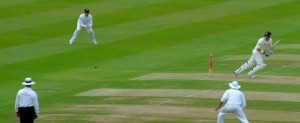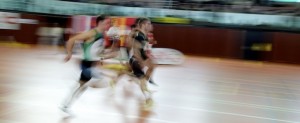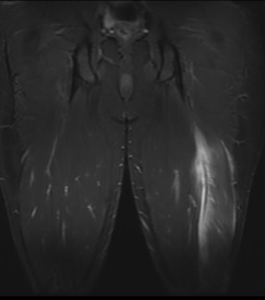In the past this site has featured some lighter, colloquial blog posts. These articles discuss issues related to the greater physiotherapy community. Thus, I present a few mantras I have heard, adapted or made up for the physios to live by in the coming year.
Radial tunnel syndrome is rare, it is challenging to differentially diagnose and can be a monster to manage. If you have a recalcitrant case of tennis elbow then this post will interest you! This article discusses the best available evidence for assessment and management of radial tunnel syndrome.
Have you ever heard of snapping scapula syndrome? If you answered no, I would not be too surprised. Whilst this condition is more common than you may think, it seems to be underappreciated within the physiotherapy. Thus, this article will discuss snapping scapula syndrome including what it is, why it occurs and what you need to do to fix it!
Ankle sprains are very common in the practice of sports physiotherapy. However, unfortunately many patients go on to have long term problems. This has lead to the development of many proposed treatments and rehabilitation programs. This article will discuss new research into the use of manual therapy techniques combined with exercises for the rehabilitation of inversion ankle sprains.
As a sports physiotherapist, it is important that you not only rehabilitate athletes but ensure that they are fully fit to return to play. As many of you are fully aware, objective measures such us a full active range of motion does not determine an athlete’s readiness to RTP. Accordingly, a comprehensive assessment of an athlete’s function, via functional performance testing, becomes an absolute assessment necessity. This article will discuss current research on the the role and implementation of functional performance testing, as well as some tests that you may use in your own clinical practice.
Many sports physiotherapists rehabilitate hamstring injuries on a daily basis. Unfortunately, they can be very tricky to fully and definitively rehabilitate fully and reported re-injury rates are as high as 50%. This statistic inevitably leads to the people screaming it is due to inadequate rehabilitation techniques, which may be correct. Accordingly, this article will discuss new research which compares the clinical and morphological effects of 2 effective rehabilitation programs for hamstring injuries.
Now, we have discussed Arnold Schwarzenegger on this site before, in a post about the psychology of sports injury and physiotherapy. However, it seems that man was quite the insightful gentleman. In his text The Encyclopedia of Modern Bodybuilding Arnold discusses the mind to muscle connection and the importance of not just lifting a weight up and down, but having your “mind in the muscle”. This article will discuss new research into conscious correction of scapular position.
Those in the world of sports physiotherapy would be aware of the frequency with which we encounter episodes of patellar instability. Whilst much research is performed in the adult population, it is important to recognise patellar dislocation as one of the most common acute knee injuries in children. Accordingly, this article will discuss new research into the predictors of patellofemoral joint instability in the adolescent and paediatric populations.
In This Episode In this episode of the podcast I continue the interview with Paul Wright. In Part 2, of the interview we discuss: The 4 most successful and easy to implement external marketing strategies How to overcome barriers to implementing these successful strategies 5 of Paul’s business failures and what he learnt from them Why […]
 TSP011: Health Business Success with Paul Wright (Part 2) [ 28:45 ] Play Now | Play in Popup | Download
TSP011: Health Business Success with Paul Wright (Part 2) [ 28:45 ] Play Now | Play in Popup | DownloadIn this episode of the podcast I interview Paul Wright. Paul Wright is a physiotherapist and business consultant. He graduated from his first degree, as a Physical Education teacher, in 1987 and then graduated as a physiotherapist in 1990. He has also completed an Advanced Diploma in Business Management. Paul has opened multiple multi-disciplinary health clinic and has been actively involved in clinical education around the world having lectured to over 20,000 health professionals…
 TSP010: Health Business Success with Paul Wright (Part 1) [ 45:04 ] Play Now | Play in Popup | Download
TSP010: Health Business Success with Paul Wright (Part 1) [ 45:04 ] Play Now | Play in Popup | DownloadIn the past this site has featured some lighter, colloquial blog posts. These articles discuss issues related to the greater physiotherapy community. Thus, I present a few mantras I have heard, adapted or made up for the physios to live by in the coming year.
Radial tunnel syndrome is rare, it is challenging to differentially diagnose and can be a monster to manage. If you have a recalcitrant case of tennis elbow then this post will interest you! This article discusses the best available evidence for assessment and management of radial tunnel syndrome.









